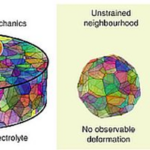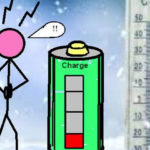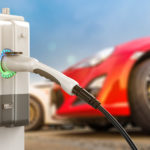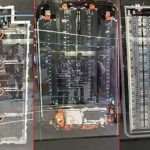The short answer is ‘no.’ We might be getting closer, but there’s still no guarantee that we’ll get there soon. Some automakers are looking at 2024 for the introduction of solid-state batteries in EVs, but others don’t see that happening until 2030. Expectations are high but unfulfilled. This FAQ reviews the anticipated benefits of solid-state lithium batteries, looks at some current commercial solid-state battery development activities, and closes with a brief review of some of the remaining challenges.
Solid-state batteries (SSBs) are already used in small devices such as wearables, RFID, and pacemakers. But they have not been scaled up to the sizes required by EVs. If the technology can be scaled successfully, the benefits are expected to be many, starting with up to 10x the capacity of today’s lithium-ion batteries (LIBs). And unlike today’s LIBs, SSBs for EVs won’t need extensive monitoring, cell balancing, controls, or cooling systems. So, not only will they have more capacity, they will result in smaller, simpler, and lighter energy storage systems, further adding to vehicle range and/or hauling capacity.
In an SSB, the polymer separator used in a LIB is replaced with a solid-state separator. The solid-state separator enables the use of a lithium-metal anode in place of the carbon- or silicon-based anodes found in LIBs. The lithium-metal anode contains a larger amount of active material per unit of volume, making it more energy dense compared with LIBs and enabling the battery to store much greater amounts of energy in the same volume.
LIBs use what’s called a “hosted anode,” where the host material is usually carbon or silicon. The host provides a structure to hold the lithium, improving battery safety. For example, it takes six carbon atoms to host one lithium atom. Eliminating the need for carbon (or silicon) while maintaining battery safety enables the same amount of energy to be stored in a smaller volume (Figure 1).

In addition to greater energy density, SSBs are expected to deliver:
- Faster charging since the lithium will plate directly to the anode and will not have to diffuse into the carbon or silicon atoms used in LIBs.
- Longer lifetimes will result from eliminating capacity fading caused by chemical ‘side reactions’ between the carbon (or silicon) and liquid electrolyte in LIBs.
- Improve safety may result from removing the combustible organic porous separator and organic electrolytes used in LIBs.
There are numerous efforts underway to develop SSBs. Some are going directly to a final design that is a complete SSB. In contrast, others are more incremental approaches and starting by combining a solid-state separator with a variation on a more conventional hosted anode for first-generation designs before moving to a 100% lithium-metal anode in subsequent product generations (Table).

Some companies are developing flexible SSB platforms that can employ commercially mature cathode materials such as lithium nickel manganese cobalt oxides (NMC) together with high content silicon and lithium metal anodes. The platform would also be able to use low-cost cathode materials not suitable in liquid-based battery designs. Those low-cost materials could remove cobalt and nickel from the cathode entirely and decrease active materials costs by up to 90% in the cathode. Development of a flexible SSB technology platform is expected to reduce the perceived risks of EV makers and speed early adoption of SSBs.
Development roadmaps typically have more than one track. For example, developers are producing SSBs with capacities of several Ah, with the goal to scale to several tens of Ah followed by the final scaling to hundreds of Ah. In addition, early designs will use less optimized but more mature materials systems to reduce risk further. Higher performance materials systems that support faster charge rates, lower temperature operation, and other performance enhancements will be rolled out medium-term.

So, what could possibly go wrong?
With even the most optimistic projections putting the commercialization of solid-state batteries several years in the future, there are still several significant challenges to be overcome:
- “Solid-state batteries utilizing Li metal anodes have the potential to enable improved performance (specific energy >500 Wh/kg, energy density >1500 Wh/L), safety, recyclability, and potentially lower cost (<$100/kWh) compared to advanced Li-ion systems. These improvements are critical for the widespread adoption of electric vehicles. . . [But,] delivering a full solid-state battery that meets the performance, cost, and manufacturability necessary for an electric vehicle within the next 5 years, or even 10 years, is ambitious, particularly when the best solid electrolyte and cathode chemistry are not obvious.” – from ‘Challenges for and Pathways toward Li-Metal-Based All-Solid-State Batteries’ published in ACS Energy Letters and based on the findings of a 6-hour workshop sponsored by Oak Ridge National Laboratory in May 2020.
Manufacturing cost-effective and robust ceramic separators for SSB is challenging. At a minimum, the separator must:
- Conduct lithium-ions at least as well as current liquid electrolytes
- Be electrochemically stable in the presence of lithium metal
- Resist (or better, prevent) the formation of lithium dendrites that could short out the battery
- Be competitive with the low cost of today’s mature LIB technology (Figure 3)

The Oak Ridge National Laboratory workshop identified specific gaps in materials science, processing science, and design engineering that must be addressed before SSBs can be commercialized:
- Materials science gaps related to the lithium-metal anode and active cathode materials, including the interface between the solid-state electrolyte and the lithium-metal anode. For the highest energy density, the cathode must be the largest component of the battery; improved active cathode materials need to be developed.
- Processing science gaps related to the solid electrolyte separator microstructure and mechanical properties significantly impact the cost and performance of solid-state batteries. It will be necessary to strengthen thin solid electrolytes and thick cathodes without impeding ion transport.
- Design engineering gaps, including maintaining optimal stack pressure for SSBs without affecting cost and energy density. Maintaining stack pressures of ≥5 MPa may require an external mechanical structure that negates the cells’ specific energy or energy density benefit.

In many instances, near-term performance tradeoffs may be necessary to develop SSB technology incrementally. For example, some researchers are changing their focus from developing the highest ionic conductivity, which is often accompanied by poor interfacial stability, to systems with better interfacial stability, but lower levels of ionic conductivity.
Ramping up the size of SSBs is probably one of the largest challenges. Many research efforts have produced relatively small SSBs with capacities below 5Ah. For commercial success, it is anticipated that the cells need to scale to tens or even hundreds of Ah. Ceramic-based solid-state electrolytes, in particular, are challenging to scale without introducing manufacturing defects such as cracking. High-volume roll-to-roll manufacturing that makes cylindrical cells such as 18650s and 21700s cost-effective is not easily applied to ceramics that are brittle at thicknesses under 30μm that are required by most roll-to-roll processes. Combining ceramics with polymers may result in flexible solid-state electrolytes that support scalability without additional process steps.
In summary, there are several areas with challenges to be overcome before SSBs can enter high-volume commercial production:
- Better control of materials and interfaces
- Processing and cost concerns
- Scaling up the size of the SSBs while maintaining high levels of performance
- Optimized mechanical designs that provide optimal stack pressure without negatively impacting cost or energy density.
Summary
There’s no lack of optimism regarding the potential of SSBs. Tremendous efforts are underway by many commercial and research organizations, each racing to the first with a manufacturable SSB that delivers reasonable performance. And while there are numerous small-scale prototype SSBs, the ability to scale the technology up to the size needed by EVs is still not certain. While SSBs already bring benefits to small applications requiring tens or hundreds of mAh of storage, the ability of SSBs to deliver hundreds of Ah will be the key to their longer-term success in EVs and other large-scale energy storage systems.
References
Challenges for and Pathways toward Li-Metal Based All-Solid-State Batteries, ACS Energy Letters
Roadmap to commercialize all-solid-state batteries, American Ceramic Society
Solid-State Battery Landscape, QuantumScape
The Future of Energy Storage, Sila Nanotechnologies Inc.
What is a Solid-state Battery?, Samsung SDI







Leave a Reply
You must be logged in to post a comment.